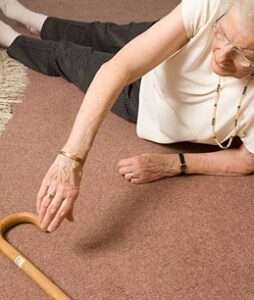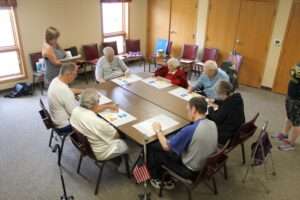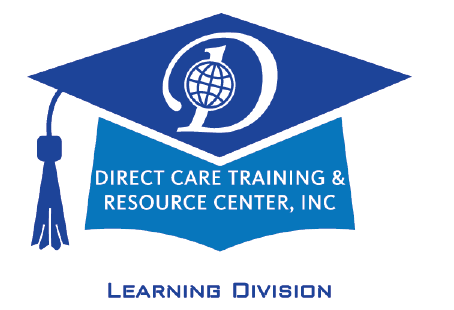What Some Reviewers Get Wrong about Neurological Cognitive Day Programs; Bound to Create Extensive Litigation…
Jean Sherman, MSN – Major Contributor
Adult day care is not new. These programs have been well-known for over 35 years in America. They assist in keeping families and communities together by providing a combination of social and clinical services.
 Think of the disadvantage to society if they did not exist for the extended family where everyone who is not retirement age was away during the day at school or work. What becomes of the disabled and/or elderly person who lacks the cognition and/or physicality to manage a day of life independent of the help of others? The answer is easy. Medications would be missed. Falls would occur. Nutrition would be neglected. Hydration could receive little to no attention and the deterioration of a highly vulnerable population would escalate.
Think of the disadvantage to society if they did not exist for the extended family where everyone who is not retirement age was away during the day at school or work. What becomes of the disabled and/or elderly person who lacks the cognition and/or physicality to manage a day of life independent of the help of others? The answer is easy. Medications would be missed. Falls would occur. Nutrition would be neglected. Hydration could receive little to no attention and the deterioration of a highly vulnerable population would escalate.
Let us also not forget the threat to their security and safety in the event a demented person wanders into traffic, sets fire to the house or is a victim of a home invasion. This relatively brief description provides a basis for establishing the value of adult day services.
Today, these programs have evolved even more. We now have the Neurological Cognitive Day Program, serving both adult and pediatric populations. The major difference? While the traditional adult day care – to a degree – has a focus on individuality and person-centeredness, most operate in more of a group format. There are breakout activity sessions, program aides assist in personal care and some even have physical rehabilitation components, however, there are still marked differences. What are these?
The Neurological Cognitive Day Program is driven by professionals only. Often under the supervision of licensed occupational therapists and associated professionals, the goals are established in specific Plans of Care for the program participant based upon diagnostic and related criteria. This includes observational contributions made by physiatrists, psychiatrists and neurologists. The focus is the restoration of cognitive function that has become impaired through physical trauma, i.e. auto and work-related accidents.
The Neurological Cognitive Day Treatment Therapy Program is an intensive outpatient program for people following an acquired or traumatic brain injury. Therapy addresses cognitive deficits in the areas of orientation, attention, memory, problem solving, planning, organization and executive functioning. This program model, which normally runs three to five days a week includes individual and group treatments based on the needs of each participant. Groups are rarely larger than six, (6) participants at a time. Individual therapies may include physical therapy, aquatic therapy, occupational therapy, speech therapy and psychology, although these are often separate elements from the cognitive programming.
Specialized Groups should include:
- Cognitive Skills Group
- News and Notes Group
- Psychosocial Group
- Acquired Brain Injury Resource Group
- Chemical Usage Education Group
- Community Out-trip
- Interpersonal Skills Group
- Occupational Therapy Group
Daily rates can run from $350.00 to $450.00 per day, depending upon the patient’s specific needs. The programs schedules rehabilitative activity in 15 and 30-minute increments and report to the prescribing physician. Those that are professionally managed often issue Progress Reports that help the medical practice to determine if alterations in how the services are delivered is warranted. This is a part of the Care, Recovery and Rehabilitation that drives the long-term care along the continuum for the neurologically injured party.
 Responsible medical case managers often shadow the program to document clinical and rehabilitative achievement. Their reports can complement the work of the program provider and keep insurers informed.
Responsible medical case managers often shadow the program to document clinical and rehabilitative achievement. Their reports can complement the work of the program provider and keep insurers informed.
Some in the Personal Injury Protection, (PIP) community have determined through their reviews that an appropriate reimbursement is anywhere from $16.00 to $35.00 per day. This is less than the amount more group focused traditional adult day care programs are reimbursed via Medicaid. Examples include Georgia which reimburses around $60.00 and Pennsylvania around $100.00 per day. Why is this such an astounding issue requiring resolution?
 In litigation, among the first matters to be reviewed would be program costs. Think of a six, (6) hour program that is managed in 15-30-minute intervals, focused on specific outcomes for each participant, enrolling four, (4) to six, (6) participants per sessions. Consider the involvement of the:
In litigation, among the first matters to be reviewed would be program costs. Think of a six, (6) hour program that is managed in 15-30-minute intervals, focused on specific outcomes for each participant, enrolling four, (4) to six, (6) participants per sessions. Consider the involvement of the:
- Program nurse at $45.00/hr
- Occupational Therapist at $50.00/hr
- Physical Therapist at $50.00/hr,
- PT Assistant at $30.00/hr
- Program Aide at $15.00/hr
- Speech/Language Therapist $50.00/hr

And all without considering the cost of the facility and other program incidentals.
Once reasoning this way, it is easy to understand how $16.00 or $35.00 per day is hardly an adequate reimbursement. The proof of this is easy to discover in the numbers themselves, not to mention the outcomes.
There are long-term care and recovery issues to consider also. For example, a person who spends time in a cognitive day program with a neurological focus stands a much likelier chance of:
- Regaining executive function
- Enhancing personal independence
- Maximizing the confidence to exist and thrive without significant assistance from others
Remove the program’s value by toying with its definition, goals and reimbursement and the likelihood of other services having to be in place for much longer periods – perhaps years – increases significantly. A little shortsightedness can create large, long-term expenses.

Adult Day Care Associations can do much to increase awareness of this program model. It will involve diversifying the focus a bit to include these cognitive initiatives. This does not mean we ignore the medically fragile elderly and the younger disabled who may not have traumatic brain and other neurological injuries, however, awareness of other sophisticated offerings in the community serves everyone well.
__________________________________________________________________________
Another blog post by Direct Care Training & Resource Center, Inc. Photos used are to complement the written material and do not imply an affiliation with or endorsement by any individual or entity and may belong to their respective copyright holders.
Follow us…






